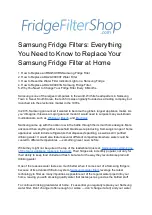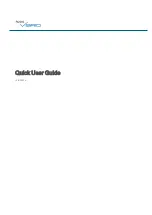
Operating Instructions and Parts Manual
11
SWS
(A) SPRING:
A spring that emerges
from the ground.
Occurs when water in
permeable materials is
trapped between
impermeable
material as rock or clay
.
(B) LAKE, STREAM or POND:
Surface water
, unless treated,
is usually not safe for human
consumption. It may be used
for purposes such as washing
or irrigation.
(C) DUG WELL:
A hole is excavated
several feet in diameter
to a fairly shallow
depth. It is then lined
with brick, stone or
concrete to prevent
cave-in.
(D) DRIVEN WELL:
Pipe with a pointed
screen is driven into
the ground below
the water table.
The depth is usually
less than 50 feet.
A
vailable
diameters are
1" through 2".
(E) DRILLED WELL:
A hole bored into the
earth with machinery and
lined with pipe. Depths
range from a few feet
to over 1000 feet.
Common well diameters
are 2", 3", 4" and 6" for
domestic water wells.
(F) CISTERN:
An underground tank
built to collect rain
water from rooftops.
The water is not fit
for human consumption.
(A) SPRING
(B) LAKE,
STREAM, POND
(C) DUG WELL
(D) DRIVEN WELL
(E) DRILLED WELL
(F) CISTERN
SHALE
TOP SOIL
CLA
Y
PERMEABLE
MA
TERIAL
W
A
TER
BEARING
SAND
W
A
TER T
ABLE
Figure 12 - Well Types






























